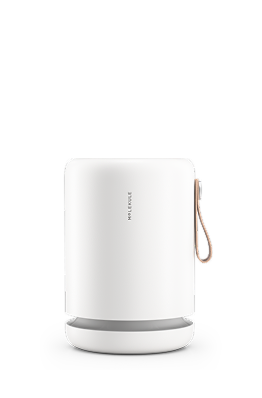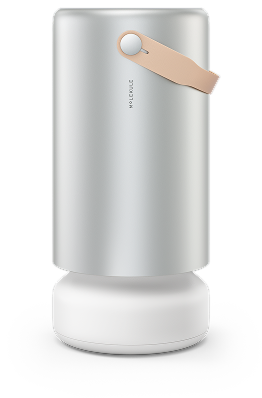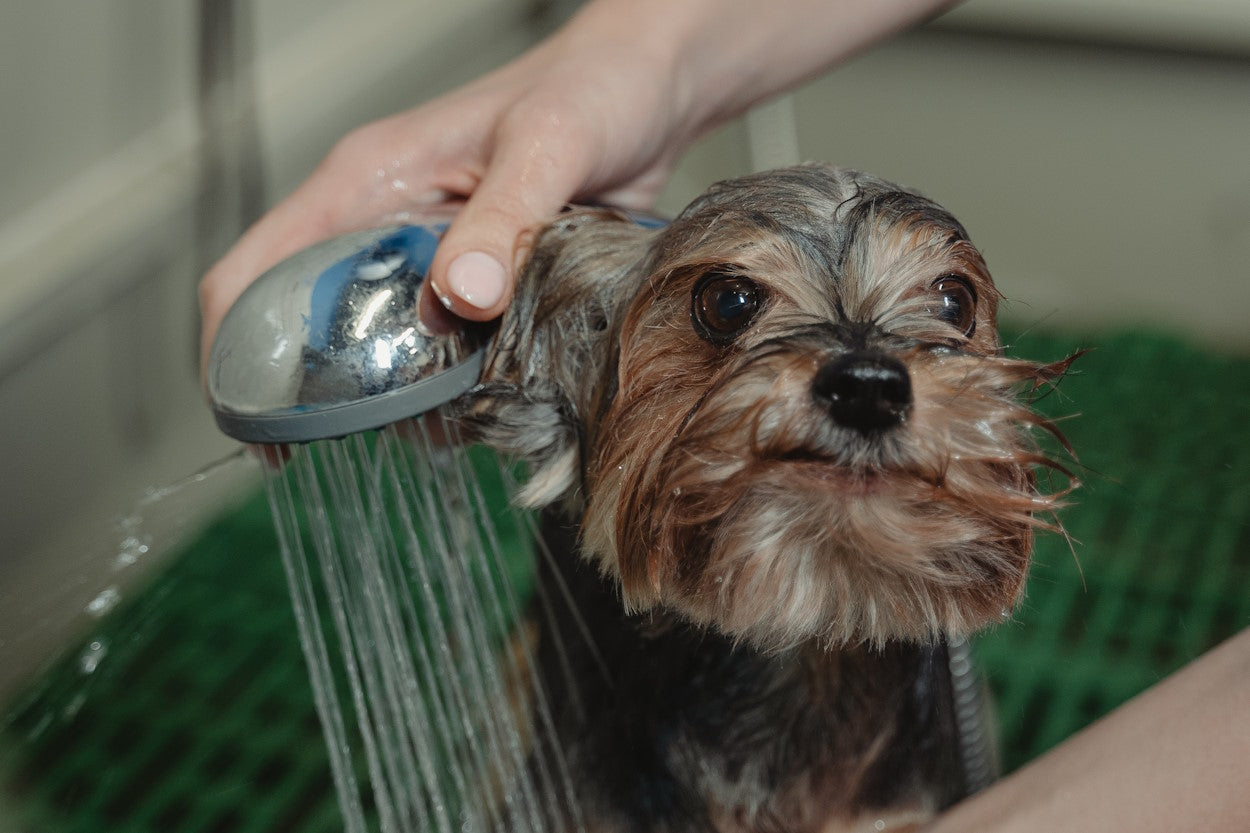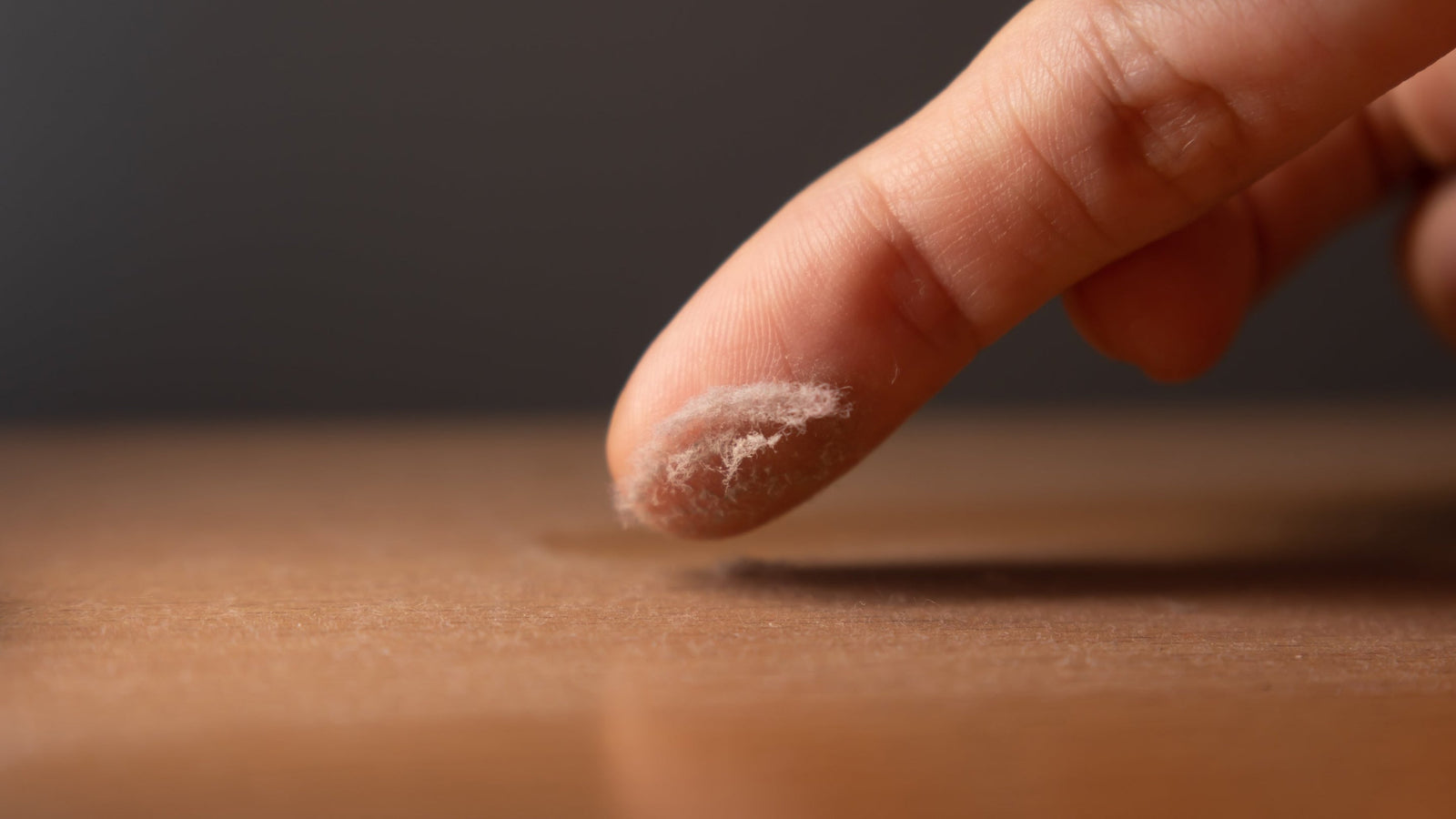The furry part of our furry friends doesn’t just accumulate under the couch and along the baseboards, it also harbors pet dander and any other allergy or asthma triggers that our pets rubbed up against along the way. There are so-called hypoallergenic pets that shed less or may have no fur at all, but none of us will be swapping out our companion for one that leaves less residue around the house.
While there are certainly ways to collect the prodigious amount of dog hair out there to make human garments, a less laborious solution is deshedding. Deshedding involves using special combs or shampoos to reduce dog shedding in the future and is overall one of the more effective pet shedding solutions. Most pets enjoy the process, which will make the bond between you a little stronger. It’s a good idea for basic pet grooming and pet hair removal, so less hair is left around the house that can be stirred up along with any stuck dander and allergens. Let’s take a look at deshedding for dogs and cats, what it can do, and how to do it.
Nature’s pet hair removal
There are a lot of different colors and configurations of animal coats, some are actual fur, some are hair, and many animals grow more than one type of coat. It can also get confusing because individual strands of fur are still referred to as “hairs”. Fur stops growing at a certain length then falls out regularly, but hair, like yours, will grow forever and generally stays put. So deshedding is best for animals with fur rather than hair.
Canine and feline fur grows in distinct stages:
- Growth or anagen. This is when the individual hair is actually growing and emerging from a pit in the skin called a follicle.
- Regression or catagen. The growth from the follicle slows to a halt.
- Rest or telogen. The hair sits in place, attached to the follicle, and performs its job, eventually drying out and weakening.
- Shedding or exogen. The hair detaches from the follicle and falls away. The follicle starts a new hair.
Deshedding combs can help to pull out hairs that are dried out and weak but haven’t fully detached yet, and deshedding shampoos can loosen the bonds that stick hairs to each other so they can be washed away. You’ll want to set your deshedding schedule and method according to what kind of coat your pet has.
How to deshed a dog
To reduce dog shedding, the first step is to find out what type of fur your dog has. This is important not just for deshedding, but also making sure there aren’t any uncomfortable tangles or other fur-based issues. Dog coats are best identified by their length, texture, and hair shape, and if the dog has an undercoat or not.

Length of fur
- Long hair. Hairs over an inch are on dogs with long hair. These coats on dogs like Afghan Hounds or Shi-tzus are long and flowing, and dead hair can become matted with mud or dirt, which pulls on the skin and is usually painful for the dog.
Note: Avoid using scissors to cut out mats that are against the skin, it is very easy to cut skin by mistake. Try electric clippers or softening the mat with dog hair conditioner or cornstarch.

- Medium hair. Dogs with hair that grows to about an inch have medium hair. Golden retrievers, German Shepherds, Border Collies, and other dogs that have a thick coat but not long locks are medium haired dogs.

- Short hair. Hair less than about a half inch is on short haired dogs. Beagles, bulldogs, and Labradors with hair close to the skin have short hair.
Many dogs may have more than one hair length, like short hair on their faces but long on their bodies.
Texture of fur
- Smooth hair. Smooth hair is the more common type, and is thinner. As a result it easily gets entangled and stuck in the fibers of clothing, furniture, or carpeting.
- Wire hair. Wire hair is thicker, rarely sheds, and gives dogs like terriers their scruffy look. It usually sticks out of a smoother undercoat, and can be trimmed down to the undercoat. Show dogs get their stray wire hairs pulled out or “stripped”.
Shape of fur
- Straight hair. Most dog hair is straight.
- Curly hair. Curly dog hair like on Poodles, Bichon Frises, or Airedales is actual hair that rarely sheds so it can hold on to allergy triggers longer.
- Wavy hair. Wavy hair is found in the various Poodle crosses like Goldendoodles or Labradoodles. It’s a blend of straight and curly and the amount of shedding varies from dog to dog, but is generally less than their straight hair parent.
Single, double, or triple coat
Most dogs are double-coated, in that they have a shorter undercoat for insulation and a longer, wiry topcoat for protection from dirt and debris. Dogs with double coats tend to be fluffier, may have a naturally thick furry collar, prefer cooler areas to rest, and may shed their undercoat almost completely in the late spring and fall. Compared to the undercoat, the topcoat is usually composed of thicker hairs spaced farther apart that may stick out through the undercoat. Not all double-coated dogs have an unruly furry appearance, the sleek Shiba Inu is a double-coated breed.
Single coated dogs are usually short-haired, though Collies and Terriers are single-coated. Dogs with hair, like Poodles, may have it shaved very close to the skin

It’s important to only deshed double-coated dogs and never shave them completely, even if they seem hot in the climate. Undercoat hairs grow faster than topcoat hairs and can crowd them out, causing potential long-term problems with your dog’s coat.
Triple coated dogs are some of the woolly arctic breeds like the Chow Chow, Samoyed, or Alaskan Malamute. The skin of these dogs won’t be visible under the blow dryer due to their very dense inner insulation layer. Damaging this bottom layer can hurt the dog’s skin so it should never be pulled or brushed out, just like these dogs should never be shaved or even trimmed very close.
Hairless dogs
Dogs without fur or hair can’t shed. Instead, they’ll need a coat - the garment, not fur- for cold weather, and sunscreen when in the sun. They have dander just like other dogs, but baths and proper skin care products can minimize what they leave around the house. This dog, the Mexican Xoloitzcuintle, is a hairless breed. 
How to deshed a cat
To reduce cat deshedding, the first step is to figure out what kind of coat your cat has, just like with dogs. The basic cat fur types are short, long, or curly. The domestic cat that lives with us doesn’t have anywhere close to as much variation between breeds as dogs. Differences like those between Chihuahuas and Saint Bernards aren’t found in cats, so their fur varies a lot less, too. There are hairless cats as well, who obviously don’t shed any more than hairless dogs.

- Short haired cats are the most common cat, and shed the least after hairless cats.

- Long haired cats have fur anywhere from 1 to as much as 5 inches long that must be groomed to prevent tangles. These cats leave prodigious amounts of fur behind and are great candidates for deshedding, and are also prone to matting, like long haired dogs. They need to be brushed many times a week or as often as every day.
Note: The warning for not using scissors to cut out mats goes double for cats, which are smaller and easier to cut by mistake. Electric clippers can work to cut mats, and they can be softened with cat hair conditioner or cornstarch.

- Curly haired cats are rare genetic crosses and have slightly curled soft hair.
Cats may also be single or double coated. Like dogs, double coated cats are likely to rest in cooler areas of the house and will drop their undercoat twice a year. Single-coated cats have very fine and silky hair, while the coarser topcoat of double-coated cats can be felt when petting.
Temperature and sunlight have a big impact on when a cat sheds seasonally. Cats that live indoors with artificial temperatures and artificial light may just shed year-round.
Hairballs
Healthy cats should be able to pass hair through their guts after they swallow it when doing personal grooming. Cats that regularly throw up hairballs may have inflamed bowels that don’t pass hair (or food) well. Deshedding can help with hairballs, but talking to your vet about a grain-free diet could be a way to reduce inflammation and therefore hairballs.
Deshedding techniques
There are two basic deshedding techniques for pet grooming: shampoos and tools. Shampoos are formulated to have an impact on the types of chemical bonds that hold hair together and give it shape, by altering them hair can be made to fall out of the coat easier. Tools are either regular brushes, regular combs, bladed combs, or gloves.

Deshedding tools
Almost all our furry friends with any type of coat will benefit from regular pet grooming. Deshedding is the one of the most effective pet shedding solutions, and using the right deshedding comb or brush in the right way can make pet hair removal simple.
- Short-bristled brushes or slicker brushes are best for short-haired pets, slicker brushes are those used for slicking back straight human hair. Brush against the hair’s growth direction to loosen hair, then brush with the growth direction to pull it out. Deshedding gloves, hound mitts, or other hand-covering can be good for pets that don’t like brushes or combs.
- Brushes with bristles long enough to get into the undercoat are needed for longer-haired dogs, and long-haired cats will need a comb. When they are losing their undercoats or just seem like they are dropping extra hair, a coat rake or bladed deshedding tool may be necessary, just keep metal tools away from their skin.

Deshedding shampoos
There are quite a few deshedding shampoos out there for cats and dogs. Look for one that fits your pet’s needs, and is formulated for their hair and coat type. Products that require a few minutes to work will not be best for pets that don’t like baths.
- Remove any mats from long-haired pets before washing, they are unlikely to be easier to remove when wet.
- Never use human shampoos on your pets. There are many ingredients that are beneficial for us but toxic if absorbed through a pet’s skin or licked off fur.
Cover dog from Photo by Tima Miroshnichenko. Image of Xolo dog courtesy of Wikimedia Commons and was taken by Pharaoh Hound, as was the cropped shot of the Selkirk Rex taken by Heikki Siltala. Special thanks to Photo by Akshay Gidwani on Unsplash for the picture of the Irish Setter, Dieny Portinanni on Unsplash for the picture of the Shi-tzu, Jaspal Kahlon on Unsplash for the picture of the Beagle, Chris Ensminger on Unsplash for the picture of the Malamute, chanroro on Unsplash for the picture of the British short hair, Kanashi on Unsplash for the picture of the Maine Coon, cat being groomed shot from RDNE Stock project, Husky getting brushed from Yaroslav Shuraev.







